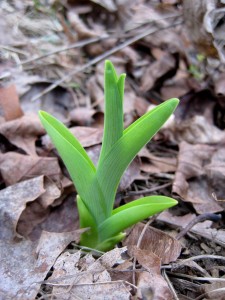
eventually the time of blossoming will come…
– Photo by Jan Ketchel
Here is today’s channeled message brought to you by Jan.
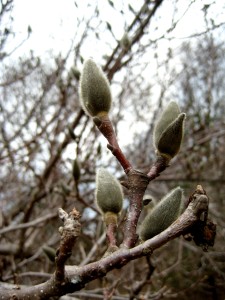
We are beings filled to the brim with conflicting tendencies. St. Paul said it succinctly: “That which I would I do not, that which I would not, that I do.” Confronted with the opposition of his own carnal sexuality and his deep spirituality, St. Paul went the way of many a monastic tradition and chose celibacy. The challenge of truly reconciling this polarity within the self by rejecting that which is outside of the self is daunting and often misses the mark. The failure of this resolution couldn’t be more apparent than in the modern Catholic Church,* tarnished worldwide with deep involvement in sexual abuse. Clearly, merely shunning or splitting off sexuality does not make it go away—it must be reckoned with.
Carl Jung pointed out that for a tree’s branches to reach heaven its roots have to reach hell. True reconciliation of inherent human oppositions must integrate all sides of human nature into a cohesive whole. A one-sided solution to our problems inevitably sets the stage for a backlash or a breakthrough of the forsaken other—the rejected shadow self.
Times of breakthrough are exceptional times, like the breakthrough of a swollen river over its dikes. In hexagram #43, Breakthrough, the I Ching counsels resolute action in such exceptional circumstances. First, resolution must be based on a union of strengths and friendliness. The adult self must hold its own and not be taken over by the opposing tendency. On the other hand, it needs to greet it with friendliness, lend an objective ear to its point of view.
Second, a compromise with evil is not possible. If the dissociated tendency insists on taking over the personality on its own terms, it must be openly discredited. There can be no compromise with a one-sided truth. On the other hand, the passions and one-sided motives of the ego self must equally be brought into the light and openly examined.
Third, the struggle must not be carried out directly by force. If an opposing tendency has taken on a compulsive habit in the personality, labeling it evil or denigrating the self for its presence in the personality only empowers it as it weakens the adult self charged with shifting the habitual state of affairs, such as with some kinds of addictions.
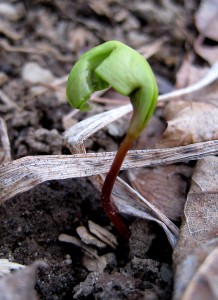
Finally, the best way to advance is to make energetic progress in new behaviors that serve the true needs of the overall personality. A dysfunctional habit may actually be holding the place of a deeper need for fulfillment. Rather than brand the habit as bad, make use of it to turn in a new direction and engage in behaviors that fulfill the deeper needs of the self. For instance, challenge the self to go into the world and interact versus retreating and soothing the self with lulling talk and substance. Or rather than seeking excessive fulfillment in the outer world, retreat into the deep vibrational experience of transcendent oneness in meditation.
Breakthrough encounters are part and parcel of the individuation process. Breakthrough encounters are necessary guideposts in recapitulation as well. Through these encounters we are afforded the opportunity to integrate our opposing tendencies into a holistic being, truly capable of a new mantra: “That which I would, I do;” the ultimate conscious breakthrough, in consummate wholeness.
Breaking through,
Chuck
* It is interesting to note that an ancient papyrus has broken through the sands of time and been validated by modern scientific method to challenge this one-sided position of the Catholic Church. At least some early Christian communities documented that Christ spoke of having a wife. Here is an excerpt from the NYT regarding the words that have fanned some controversy: “Jesus said to them, ‘My wife…’ ” Too convenient for some, it also contained the words “she will be able to be my disciple,” a clause that inflamed the debate in some churches over whether women should be allowed to be priests.
Read the entire report in The New York Times.
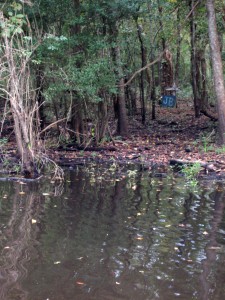
If you have read my first two books in The Recapitulation Diaries series, you know that the recapitulation journey that I undertook was often a painful process, peppered with memories and mental and physical anguish as I searched deeply within myself for explanations for why I felt so disconnected from and reluctant to experience life. I was really on a search for my spiritual self but also my authentic self, as I sought to live life on my own terms, fully safe in the world as my true self.
All of that might sound pretty esoteric, as it certainly sounded to me when I began my journey. I had only a vague idea what a true self might entail and I had no idea what it meant to do a recapitulation, and all of that esoteric talk frightened me as much as my memories did. It wasn’t until the journey was well underway that I began to embrace the esoteric lingo, for nothing else was available to describe what I was going through. Even the esoteric words I grasped at did little to convey the true depth of the mind-blowing experiences I began having.
In my next book, Into the Vast Nothingness, all that I had been working toward finally began to unfold. Ever-increasing and evermore intense episodes of breakthrough in both dreams and waking reality began to affect me on the deepest levels. By the middle of the second year of my journey, although still recalling and working through memories, experiences of the transcendent began to increase and often supersede the memory blitzes. The recapitulation went way beyond the recalling of a childhood of sexual abuse and revealed itself as the means to achieving true transformation.
I began to perceive of the recapitulation as absolutely necessary. More than just a deep self-study, the recapitulation transformed as I transformed. It offered the means to discovering not only who I was in this world, but who I had been for millennia. All of a sudden it seemed, I was granted access to ancient knowledge and a vast perspective that had I stayed my depressed and frightened old self I would never have experienced.
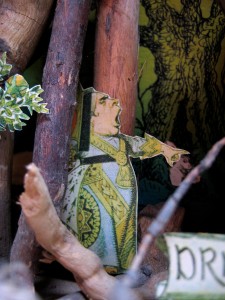
As I took the journey, I often stopped to thank myself for being so daring and brave, for doing the most frightening thing I had ever done: face myself. Facing myself meant dismantling myself down to the essence of who I really was, letting go of ideas and identities, rules and constructs that I thought I needed. It meant staying the course no matter what came to thwart me.
It meant withstanding the tensions and frustrations of what the recapitulation confronted me with, everything from painful memories and vivid dreams, to struggles and confrontations in daily life.
And yes, in dismantling the old self, in breaking down my ego, I finally did meet that spiritual self I had so longed to connect with. But far more importantly, I was granted access to experiencing myself as universal consciousness, as part of the oneness of everything, as simply energy taking a dip into this world for as long as I needed, in order to learn what I needed to learn. There’s all that esoteric talk again!
I learned that I had to live out the life of a sexually abused child until I no longer needed to, until I could say, “Enough! I’m done with playing that game!” It was at that point that reincarnation and the lives we live in this world became totally clear and acceptable to me. I “knew” that I had found the key to life in this world, the answer to the mystery: Why are we here? Well, I discovered that we were here until we don’t need to be anymore. And then a new kind of peace reigned and a new kind of motivation took over, and then the recapitulation and I were more perfectly aligned, for I had glimpsed the real truth and the real purpose of my life on this earth: to keep transforming.
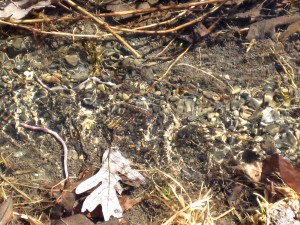
If one is truly ready to transform, the path will appear. I offer my thoughts, my books, my weekly blogs as incentives to the transformational being inside all of us.
May your path take you to your own truths and may you find your own answers to the meaning of your life. Good Luck!
Staying the course,
Jan
My next book, Into the Vast Nothingness, is in its final stages and will be published soon! Thanks for reading!
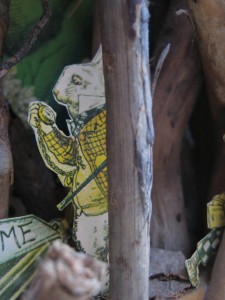
Nelson Mandela spent 27 years in prison. His ability to find contentment and meaning throughout those years prepared him to come to power in his seventies and transform a nation.
We are all in our private prison, contained within the four walls of our private karma, the central meaning of our life. The limitations imposed by our deepest challenges may prevent us from experiencing joy, safety, freedom and love. Our private prison, like Mandela’s prison, may severely limit our fulfillment through the most fruitful years of our lives.
We may find ourselves caught in swirls of sorrow, doubt, depression and deep self-pity. These are all necessary encounters, reminders of the transpersonal spirit that seeks to fly freely beyond the prison walls of our discontent. Our deepest sorrow is the song of the bird of freedom that beckons us to sing its tune.
When we recapitulate, we squarely face our karmic fixation. What happened in life that separated us from our spirit, that sent us into the desert of our discontent? Reliving, recollecting, and reprocessing the experiences of our lives ultimately releases us to the freedom of our spirit’s fulfillment. And this process, like Mandela’s, might take decades; no easy road to freedom.
But we needn’t attach to the outcome of our recapitulation process. Instead, we can focus on contentment in this moment, in every moment, through the breath. Buddhist meditation uses the breath. Yogic meditation uses the breath. Shamanic recapitulation uses the breath.
Simply focus awareness on the breath in this moment. Passively observe it without interference. Direct it at will. Gently deepen it. Focus it on the throat, on the solar plexus, on the perineum, on the big toe!
Count, to rhythmically align with the breath. Hold the breath; release it. Bring it to the tensest part of the body and allow it to gently penetrate and soften. Breathe rapidly if that feels right, fully releasing energy that has long been held in. Or breathe ever so softly, with loving tenderness.
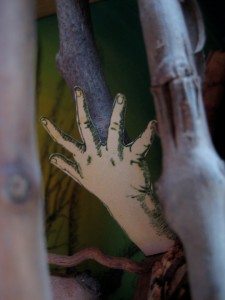
Placing awareness on the in-breath, on the inhalation of air—prana/life force/spirit—allows it to fill the body with its energy and vibration. Releasing the old stuck energies deeply stored in the body as we exhale brings contentment to each moment of our lives. The more we breathe with awareness, the deeper we breathe with awareness, the more we realize our deepest intent—to advance our spirit beyond its karmic containment into new life, full of contentment!
Simply breathing,
Chuck
As Bob Marley sings in Redemption Song: “Emancipate yourselves from mental slavery; None but ourselves can free our minds.